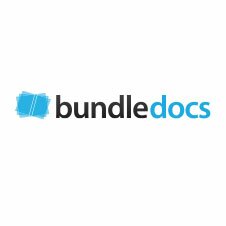Bundledocs: Foot Anstey case study – Passing the court bundles trial
When everyone was first sent home to work remotely more than two years ago, a select number of legal professionals at law firm Foot Anstey were fortunate enough to be part of a pilot scheme for a document bundling tool that eventually proved to be a huge boon for hybrid working – Bundledocs. Sophie Anderson, head of adoption and change, explains how use of the tools has evolved since.
Sophie Anderson, head of adoption and change at Foot Anstey, says the firm first undertook a pilot scheme of Bundledocs with just five licences at the very start of 2020, just before the Covid-19 pandemic took hold. The goal at the time, she explains, was to find a tool more specialised for the creation of large court bundles than its default solution, pdfDocs.“With larger bundles – anything over 500 pages – our current solution can become unstable. It was becoming a huge frustration for our lawyers spending time on a large court bundle, sometimes having to start over again if it crashed,” she explains.
As the pandemic progressed, and it became increasingly clear remote working would be here to stay, the relevance and utility of Bundledocs became ever more apparent, she adds. Though the existing solution was still used by people in the firm, as an on-premises solution, it was poorly suited to remote working. “We were relying on people’s home broadband connections while they weren’t in the office, whereas Bundledocs is in the cloud, so it was much more stable, even when working remotely.”
Change requirements
Courts were also increasingly expecting bundles to be submitted electronically and imposing further requirements, Anderson says. The cloud-based nature of Bundledocs dovetailed with this new need, explains Andy Stockley, technology adoption specialist at the firm. “Some of the guidance around bundles has become very specific, like having to be a certain size or image resolution. Bundledocs has let us adapt to what the courts are asking for on an ongoing basis.”
He cites one particular example in which a court insisted the bundle in question opened up at exactly 100% magnification on every page – a customisation beyond the capabilities of the firm’s other tools. Bundledocs was able to make this requirement a reality through ongoing support: “We got on a call with Bundledocs and within 10 minutes the problem was solved. We’ve also had training sessions with them for support with these kinds of customisation points very regularly – it’s helped us bring all the features and other elements available to us on the solution together easily,” Stockley adds.
Andy Stockley, technology adoption specialist, Foot Anstey
“We got on a call with Bundledocs and within 10 minutes the problem was solved. We’ve also had training sessions with them for support with these kinds of customisation points very regularly – it’s helped us bring all the features and other elements available to us on the solution together easily.”
Those training sessions, often consisting of bite-sized videos, have been helpful on a broader level too, he adds, saying they have supported the firm’s digital learning strategy. “People working in legal are very busy, so a quick, one-minute video on how to do something is really helpful. We’ve managed to create a playlist in conjunction with Bundledocs as well – that’s been very beneficial for us.”
As the pilot progressed over a 12-month period, awareness of Bundledocs and its utility grew organically at Foot Anstey, Anderson says. “Somebody told somebody else they’d used this new tool for X, Y and Z – ‘and it was brilliant’ – so we started getting queries from other parts of the firm not involved in the pilot.” Coupled with the move to remote working, she explains, the firm increased its number of licences from 5 to 30 over the pilot period, and this has since ballooned to 50 after full adoption.
Growing gains
While its current solution remains the firm’s more prevalent, go-to pdf document editor, with approximately 180 licences, Bundledocs has carved out a niche – though a significant and rather large niche – within the firm as the tool for large court bundles, documents that frequently require a fair amount of collaborative work to be done. And sharing bundles effectively across the firm is exactly what Bundledocs is good at, says Stockley: “The cloud-based nature of Bundledocs has allowed us to have teams of three or four people work together very closely on bundles – they can share and pick them up later if they’re having internet connectivity issues, for instance. You can’t really have more than one person working on a bundle with our current tool – it’s just not quite as seamless for those larger bundles.”
Sophie Anderson, head of adoption and change, Foot Anstey
“We’re trying to move away from a legacy of software systems that don’t integrate with each other to more of a platform approach, with an ecosystem of applications that have joined up the data. Bundledocs is very much part of that approach.”
He adds that the tool also allows better integration, specifically with a document management system (DMS) like iManage, owing to its cloud-based architecture, which enables a simple right-click to add a document from the DMS into a court bundle.
Which is apt, as Anderson says Foot Anstey is moving towards the cloud across all of its IT, both for the sake of superior cybersecurity and to future-proof its systems – meaning Bundledocs will fit in nicely with future investments. “We’re trying to move away from a legacy of software systems that don’t integrate with each other to more of a platform approach, with an ecosystem of applications that have joined up the data. Bundledocs is very much part of that approach, and it will allow us to better incorporate these documents into our platform in future,” she says.



